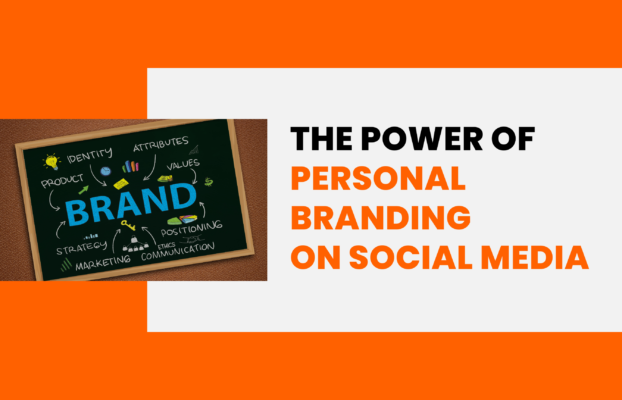One thing still wins people over like nothing else in a world where attention spans are getting shorter and digital stuff is abundant: a good tale. Even if companies invest millions in algorithms and ads, storytelling is what really makes a difference. What you strive for, how you make consumers feel, and the experience you take them on are more important than just what you sell.
Stories have always brought people together, from prehistoric campfires to Instagram Reels. When done correctly, storytelling can be a very effective branding technique that develops emotional resonance, fosters trust, and converts clients into devoted supporters. This blog post will discuss how digital businesses are shaped by storytelling in order to be remembered as well as seen.
What is Brand Storytelling?
Sharing your company’s history or accomplishments is only one aspect of brand storytelling. It involves developing an engaging story that conveys your identity, values, and purpose—beyond financial gain.
Three fundamental components are included in brand storytelling:
- Character is typically your founder, brand, or even client.
- Conflict is the issue or difficulty that has to be resolved.
- Resolution: how your product or brand provides the answer.
It extends beyond just one page of your website. Every aspect of your brand, from your tagline and images to your social media posts and customer service, is infused with genuine storytelling. It gives your brand a human touch.
Consider how Nike motivates with tales of tenacity and grit, or how Apple shares stories of creativity and inventiveness. These companies share beliefs and visions that people want to support in addition to selling goods. Brand storytelling transforms marketing into meaning, and that’s its charm.
Emotional Connection: Turning Customers into Fans
Every powerful brand has an emotional bond at its core. Although features and advantages could draw attention, decisions are primarily influenced by emotion, and narrative serves as the link that strengthens that connection.
Your audience feels understood when they recognize themselves in your story. Trust, loyalty, and even advocacy are fostered by that sense of connection. Stories give your brand a relatable and memorable quality, whether they are about the challenges your founder encountered, the transformation of a real client, or the cause your company is dedicated to.
According to studies, clients who feel an emotional connection to your brand are more valuable since they are more inclined to spend money, stick around, and suggest it to others. Why? Because individuals purchase identities, experiences, and beliefs in addition to goods.
These feelings are evoked through storytelling. It inspires, moves, laughs, or makes your audience feel heard. And a casual customer turns into a devoted fan when a company has the ability to evoke strong emotions in them.
Storytelling Across Digital Platforms
The story of your brand shouldn’t be limited to one location in the digital age; rather, it should be present on all the platforms that your audience uses. The secret is to stay loyal to your brand’s voice while modifying your story to each channel’s structure and tone.
Web page
Your “About Us” page is your backstory, and your website is your online residence. Make use of this area to emphasize your goals, journey, and guiding principles. Display genuine people behind the brand rather than just well-made goods.
Social Networks
Your story is live here in real time. Share your daily progress, milestone celebrations, customer stories, and behind-the-scenes photos. For brief, poignant narratives that encourage interaction, platforms such as Instagram and LinkedIn are perfect.
Email Promotion
Emails are a personal method to continue your tale. Share mini-stories in your emails, such as a founder’s reflection, a customer impact story, or the path of a product. Be conversational and intimate.
Video Content The most effective online narrative format is video. Stories that combine speech and images can immediately grab attention, as shown in Instagram Reels and YouTube explainers. Think mini-documentaries, interviews, or story-driven ads.
A fuller, multifaceted story that your audience can follow and relate to wherever they are is created by maintaining consistency throughout different channels, which also helps to fortify your brand’s identity.
Key Elements of a Powerful Brand Story
It takes deliberate effort to develop a compelling brand narrative. The following components are crucial for crafting a compelling narrative that motivates action, whether you’re a startup or a well-known brand.
1. Genuineness
The audience of today is able to spot fakery with ease. Your tale shouldn’t be a polished, idealized representation of you; it should be authentic. Be genuine in your mission, modest in your victories, and honest in your challenges.
2. Regularity
Whether someone enters your store, reads your blog, or sees your reel, your message should feel the same. Your identity may be strengthened at every touchpoint by maintaining a consistent voice, tone, and set of values.
3. Objective
What else do you do for a living? That should be addressed in your story. Because they stand for something more than themselves, brands with a defined mission stand out and encourage loyalty.
4. Voice and Character
A identifiable character is essential to every good story, and for brands, that individual is your voice. Is your brand entertaining and quirky? Courageous and fearless? Calm and sympathetic? Every phrase and image should convey your own personality.
5. Resolution of Conflicts
Don’t be scared to demonstrate the issue you are trying to resolve. Sharing the “why” behind your brand elicits emotional investment, whether it’s a personal issue that inspired a company concept or a market gap you saw.
Combining these components results in a narrative that not only presents your brand but also piques people’s interest, which is what propels long-term success.
Case Studies: Brands Winning with Storytelling
Great tales were the reason for the growth of some of the most successful brands in the world, not only their excellent products. Here are some striking illustrations of effective storytelling:
1. The Real Beauty Campaign by Dove
Dove revolutionized beauty marketing by showcasing authentic women rather than Photoshopped models. By embracing honesty and dispelling misconceptions, their “Real Beauty” ad struck a chord with millions of people. The message was straightforward but impactful: You are more attractive than you realize.
2. Belong Anywhere with Airbnb
Airbnb offers activities and a sense of community in addition to lodging. Their host and guest narratives, which are frequently posted on blogs and videos, showcase intimate, poignant moments that transcend cultural boundaries. The sense of home, no matter where you are in the world, is more important than the actual residence.
3. Just Do It by Nike
The themes of Nike’s narrative center on tenacity, fortitude, and pushing limits. Their advertisements show actual sportsmen conquering obstacles rather than just winning matches. Nike shares stories that resonate on an emotional and societal level with everyone from Colin Kaepernick to regular fitness fanatics.
4. Spotify: Completed Promotion
With Spotify Wrapped, listener data is transformed into customized narratives. Every year, each user receives a graphic synopsis of their musical journey, which helps them feel appreciated and acknowledged. It’s a fantastic illustration of user-driven narrative that produces heartwarming, viral content.
These companies demonstrate that being the most human is more important for presenting a compelling tale than being the loudest. Effective narrative transforms consumers into communities.
Conclusion
Storytelling is your most effective way to stand out in a crowded digital environment—not by shouting louder, but by expressing more deeply. It is the lifeblood of a powerful brand, transforming goods into encounters, clients into devoted fans, and passing acquaintances into enduring relationships.
People may forget what you said or did, but they won’t forget how you made them feel, whether you’re just getting started or trying to revamp your online presence. That is the real power of narrative.
After learning the importance of storytelling, let’s move on to the next phase, which is how to begin creating your own distinctive brand narrative.
Check out our upcoming blog post on “How to Start Telling Your Brand Story.”

















